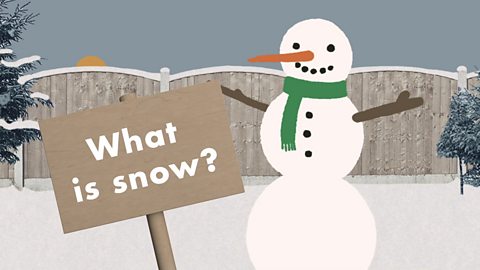Why does it snow more in some places than others?
Some places get more snow than others. This can be because of where the wind comes from, how high up they are, even if they are in the countryside or town. Why do these make a difference?
In this article you can learn:
- Why it snows more in some places than others
- Where cold winds in the UK come from
- How altitude affects the air temperature
- What urban heat is
This resource is suitable for weather topics for primary school learners.
Video - Why does it snow more in some places than others?
Watch this video to discover why it snows more in some places than others.
It doesn’t snow very often in the UK. That’s why it’s so exciting when it does!
Scotland gets more snow than anywhere else in the UK and the snowiest place in Scotland is the Cairngorms. So why does it snow more in some places than others?
Snow is a form of precipitation just like rain. Rain turns to snow when the air temperature is freezing – that’s 0 degrees C or lower.
If it is really cold the snowflakes are smaller and less sticky.
Places that get extremely cold tend to be very far north in the Arctic, very far south in the Antarctic or in the middle of large continents, far away from the sea.
In the UK, the air is only cold enough for snow when the wind is blowing fromthe Arctic regions to the north or from Siberia to the east where the air is muchcolder. So, the wind direction is important.
Another reason some places get more snow than others is altitude, which is how high up somewhere is. This is measured in metres above sea level.
The higher up you go, the colder the air gets and the more likely it is to snowrather than rain. This is why you will often see snow at the top of mountains like the Cairngorms.
Being in a city can also affect how much snow falls. A city tends to have a lot of people, traffic and buildings which heat up the air around them, and this heat can reduce the chances of snow. This is called urban heat.
So, if it is snowing in the countryside or a small town, it might not be snowing in a busy city centre.
No matter where you are, snow can be great fun. It might not snow very often so make the most of it when it does!
Why do some places get more snow?
Wind direction
- Snow is a type of precipitationMoisture that falls from the clouds. Snow, rain, hail and sleet are all examples of precipitation.. We get snow instead of rain when the air temperature is below 0°C (freezing).
- In the UK, the air is cold enough for snow when the wind is blowing from extremely cold places like the Arctic regions to the north or from Siberia to the east.
Learn more about the wind and how to measure wind direction here: What is wind?
Altitude
- Another reason some places get more snow than others is altitudeHow high up somewhere is. . This is measured in metres above sea levelThe average level of the sea's surface..
- The higher up you go, the colder the air gets and you are more likely to get snow than rain.
Urban heat
- Being in a city can also affect how much snow falls.
- Cities are busy places. All the activity and energy of lots of people, traffic and buildings heats up the air. This heat can reduce the chance of snow. This is called urban heat.
- When it is cold in winter, it is more likely to snow in the countryside, far from big towns and cities, than in a busy city centre.
- An urban heat island is how we describe a busy town or city which experiences much warmer temperatures than nearby ruralAn area in the countryside away from busy towns and cities. .
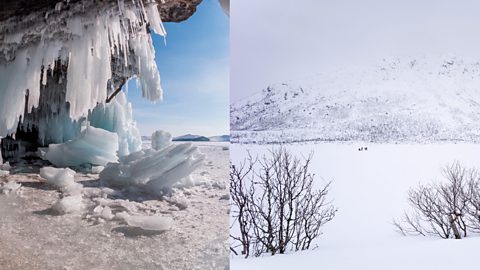
Image caption, Wind direction
It is only cold enough for snow in the UK when the wind is blowing from extremely cold places like Siberia (left) or the Arctic regions to the north (right).
Image caption, Altitude
The higher up you go, the colder the air gets and the more likely you are to get snow than rain. That's why mountain peaks are often covered in snow, like this mountain pass near Aviemore. (Philip Mugridge / Alamy Stock Photo)
Image caption, Urban heat
All the people, traffic and buildings in busy cities heat up the air around them. This heat can reduce the chances of snow and is known as urban heat. (Iain Masterton / Alamy Stock Photo)
1 of 3

Key words about snow and cold weather
- precipitation - Any water that falls from the sky. Precipitation can be rain, snow, hail or sleet.
- Arctic regions - The area around the North Pole, which includes the Arctic Ocean and parts of Alaska.
- Siberia - A large region in Eastern Europe and North Asia known for its extremely long, cold winters.
- altitude - How high up somewhere is. This is measured in metres above sea level.
- sea level - The average level of the sea.
- urban heat - When towns and cities are warmer than surrounding countryside because of all the people, traffic and buildings.
- rural - An area in the countryside away from busy towns and cities.
Test your knowledge
Interactive map
Click on the map below to learn more about snow in different places. Can you figure out what might affect snowfall in these areas?
Challenge

Investigate how much snow your area gets each year.
Can you work out what might be affecting snowfall where you live? Do you live high up or in a busy city?
More to learn about snow and cold weather
In this article, we learned why it snows more in some places than other but there's more to learn! Find out how different types of snowflakes are formed and much more.
How does cold weather affect daily life? videoHow does cold weather affect daily life?
Find out how cold weather, like ice and snow, affects people, plants and animals.
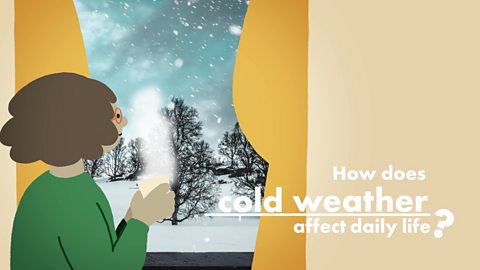
Why is the temperature different in different places? videoWhy is the temperature different in different places?
Learn about the coldest and hottest places in the world.
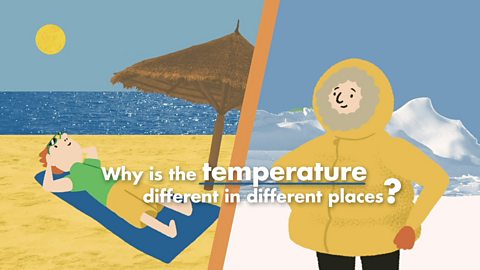
More on Weather
Find out more by working through a topic
- count16 of 24
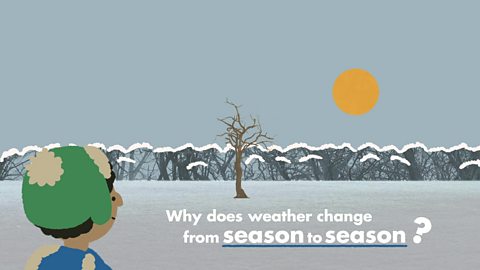
- count17 of 24
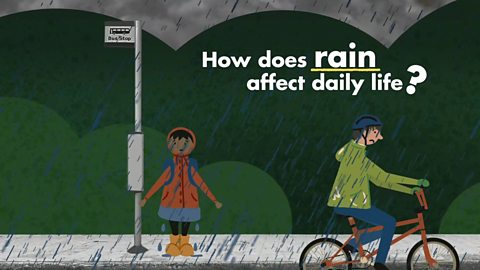
- count18 of 24

